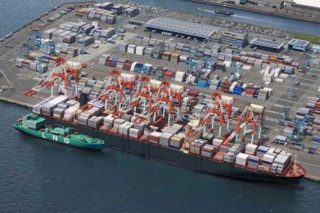LNG Bunkering Plan Unveiled for Port of Yokohama

Amid the tightening of international regulations on emissions from shipping, the Port of Yokohama has taken another step in its LNG bunkering plan as it completed a feasibility study on the project, according to Japan’s Ministry of Land, Infrastructure, Transport and Tourism (MLIT).
In an effort to build a network of LNG bunkering bases in order to further promote LNG-fuelled ships, in June 2016 the ministry set up a steering committee, comprising Tokyo Gas, Nippon Yusen Kabushiki Kaisha, Yokohama Kawasaki International Port, and the country’s administrative agencies, to investigate LNG bunkering at the port.
The ministry also compiled a development plan to build LNG bunkering hubs in Japan, using the port of Yokohama as a model case.
The steering committee formulated the road map for the development of the LNG bunkering hub at the Port of Yokohama through three phases.
The first phase, launched with the release of the feasibility study, will focus on the optimization of truck to ship bunkering operations, which are currently carried out at the port’s Shinko Pier.
The second phase of the project envisages the start of ship to ship bunkering from 2020, while the third phase will include strengthening ship to ship bunkering when demand reaches a certain scale.
“Since the Port of Yokohama is located on the Pacific side and it serves as the first or last bunkering hub in the Asian side of the North American route, the Port of Yokohama has advantages as a LNG bunkering hub, mainly for ships navigating the Pacific Ocean,” MLIT said in the report.
Due to the International Maritime Organization’s (IMO) decision to implement ship emissions regulations from 2020, the number of LNG-fuelled ships is expected to increase significantly in the future, MLIT said.
As of August 2016, about 200 LNG fuelled ships were confirmed, including those planned, and about 70 LNG-ready ships, which are planned to be remodeled to be LNG fuelled, were also confirmed.
HEADLINES
- Do shipping markets want Biden or Trump for the win?
- All 18 crew safe after fire on Japanese-owned tanker off Singapore
- Singapore launching $44m co-investment initiative for maritime tech start-ups
- Cosco debuts Global Shipping Industry Chain Cooperation Initiative
- US warns of more shipping sanctions
- China continues seaport consolidation as Dalian offer goes unconditional